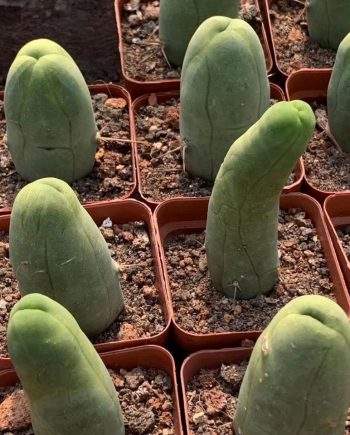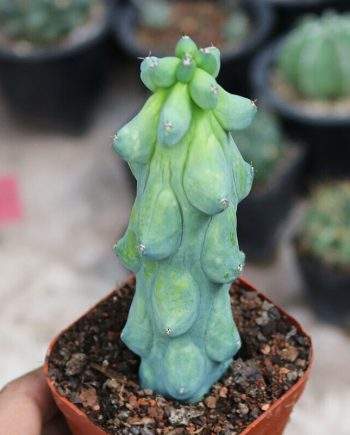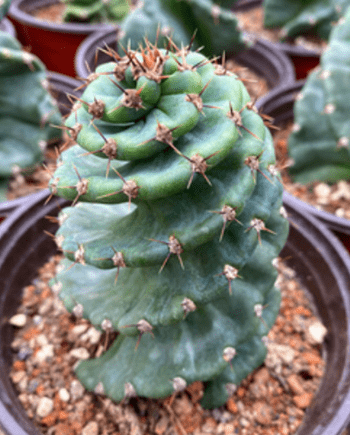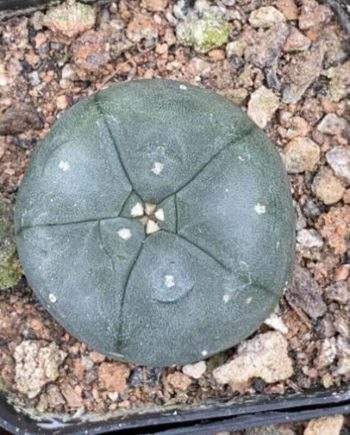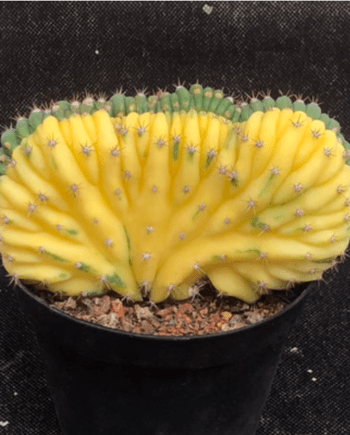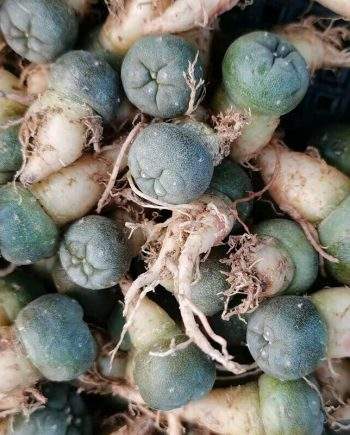Harry Johnson Sr, born on May 28, 1894, in Los Angeles, California, made a name for himself as a cactus hybridizer, notably for his work on Echinopsis/Lobivia Paramount Hybrids and various other cactus hybrids.
Harry Johnson Sr, born on May 28, 1894, in Los Angeles, California, made a name for himself as a cactus hybridizer, notably for his work on Echinopsis/Lobivia Paramount Hybrids and various other cactus hybrids.

The nursery business had its origins as a water lily nursery in 1876, established by Edmond D Sturtevant in Bordentown, New Jersey. Later, he relocated the nursery to Hollywood, California in 1894. It was during his formative years that Harry developed a fascination for succulent plants while working for Mr. Sturtevant. Harry graduated from Hollywood High School in 1912, and his subsequent path can be outlined as follows:
- Worked for a year with the Title Insurance and Trust Company in Los Angeles.
- Undertook a bookkeeping course at a business college from 1913 to 1914.
- Worked for a year in the Los Angeles Lincoln Park conservatories.
- Served as a city plant manager in Los Angeles until 1918.
- Relocated to Washington, DC, to work for Dr. David Grandison Fairchild (1869–1954) in the Bureau of Foreign Seed and Plant Introduction as an ‘assistant plant introducer.’ During his tenure at the Bureau, he collaborated with Dr. Joseph Nelson Rose (1862–1928), known for his contributions alongside Britton and Rose.
- In 1919, Harry and his wife Hazel moved to Alta Verapaz, Guatemala, where he managed a coffee plantation for two years. During his time in Guatemala, he gathered plants and seeds for various private collectors, the US National Herbarium, and Dr. Fairchild. His botanical interests led him to collect cacti, among 6,000 sheets of pressed dried plant materials he assembled during that period.
Returning to Los Angeles in 1921, Harry became a horticulture teacher in the Los Angeles school system. Following the passing of Sturtevant in 1921, Harry acquired the water lily nursery, rechristening it Johnson Water Gardens. Alongside his teaching profession, he continued working at the nursery. In 1923-1924, he pursued studies in landscape architecture and botany at the University of Massachusetts.
By 1928, he moved the nursery to Hynes, California, which was later renamed Paramount, California in 1948. In 1929, he constructed a second greenhouse to propagate water lilies and later expanded into cacti and other succulent plants. In 1935, Harry introduced a separate branch within his firm under the name Johnson Cactus Gardens. The first catalog bearing the Johnson Cactus Gardens name was issued in 1936. Subsequent catalog covers proudly advertised “Since 1876.” Harry diligently published two catalogs each year, one focusing on cactus and succulent plants, and the other on water lilies and other aquatic plants.

The world-renowned Echinopsis/Lobivia Paramount Hybrids, introduced in Harry’s catalogs, are as follows:
1954:
- Orange Paramount
- Red Paramount
- Red Pygmy
- Salmon Queen
- Sunset
1955:
- Fluffy Ruffles
1957:
- Dainty Bess
- Orange Glory
- Peach Monarch
- Tangerine
1959:
- Forty Niner
- Kate Walker
- Morning Glory
- Red Meteor
1961:
- Betelgeuse
- Stars and Stripes
1962:
- Aurora
- Terra Cotta
- White Knight
1963:
- Mary Patricia (named after his daughter)
1964:
- Watermelon
1965:
- Harlequin
1966:
- Red Riding Hood
1968:
- Blaze
- Pink and White
- Scarlet O’Hara

photo by @celestegornick-pininterest
Following the relocation of the nursery to Fallbrook, California, in 1969, where it transitioned into Cactilandia Gardens, primarily operating as a wholesale nursery, a new set of Echinopsis/Lobivia hybrids was introduced. These hybrids, although commonly referred to as Paramount Hybrids, are distinct from the original 26 true Paramount Hybrids introduced by Johnson Cactus Gardens from 1954 to 1968. The Echinopsis/Lobivia hybrids introduced after the move to Fallbrook are:
- Atomic
- Barber Pole
- Blue Horizons
- Heavenly Twins
- Northern Lights
- Pastel Peach
- Red King
- Tropic Sunset
It’s important to note that only the initial 26 hybrids introduced from 1954 to 1968 hold the true designation of Paramount Hybrids by Johnson Cactus Gardens.
In addition to the Echinopsis/Lobivia hybrids, Johnson Cactus Gardens also produced other cactus hybrids. Some of these hybrids include Chamaelopsis/Chamaecereus hybrids with names and introductory years as follows:
- Flame (1951)
- Blush (1960)
- Buttercup (1967)
- Fire Chief (1960)
- Vesuvius (1958)
- Yellow Peanut (1960)
Furthermore, Harry’s catalogs featured hybrids like Schlumbergera/Schlumbergera hybrid Crimson Giant and Lobivia/Lobivia hybrid Tricolor. Harry also successfully created a few Echinopsis/Echinopsis hybrids. His experimentation extended to hybridizing Echinopsis/Lobivia/Trichocereus species, showcasing his dedication to advancing cactus hybridization.
An explanation from Johnson about his Paramount Hybrids:
Joseph Harry Johnson, Sr
“These colorful cacti are the result of years of hybridizing and selection. They are crosses between various Echinopsis and Lobivia, and their progeny crossed and re-crossed. Many
new colors have appeared. Particularly beautiful are the salmon pinks and rich strawberry pinks that have shown up this year. Since
they can only be propagated by offsets which are very slow in appearing stocks will long be scarce.”

photo by @celestegornick-pininterest
After World War II, Harry Johnson’s sons took on important roles within the nursery business. Hal was responsible for retail sales, while Ethan oversaw the wholesale and water lily departments. The firm maintained a staff of 10 full-time employees, and there were an additional 5 to 10 part-time employees during the years of the nursery’s operation.
Harry embarked on extensive journeys through Peru, Ecuador, Colombia, and the Yucatan Peninsula for a three-month period in 1948, accompanied by John Akers (1906-1967). Their mission was to discover new cacti species. This expedition, along with another journey Harry undertook in 1951, yielded 50 previously unknown species of cacti. The collected specimens and seeds enabled the propagation of new material for distribution from his nursery. Notably, Weberocereus trichophorus from Costa Rica was described in the CSSA Journal in 1963 by Harry Johnson and Myron Kimnach.
Harry conducted additional expeditions into Mexico, Baja California, and Central America, and he also explored regions in Africa and Asia during his lifetime. His work with Disocactus/Epiphyllum hybrids from Guatemala led to the creation of a new genus called Disophyllum.
Harry held several prestigious positions and memberships, reflecting his active involvement in horticulture and gardening communities:
- He served as the president of the Southern California Nursery Association in 1935.
- From 1952 to 1954, he held the position of president in the California Cactus Growers’ Association.
- He was a charter member of the Los Angeles Men’s Garden Club.
- Harry also served as the president of the Los Angeles Landscape and Garden Club for a period of five years.

photo by @celestegornick-pininterest
In recognition of his outstanding contributions to horticulture, Harry received the Southern California Horticultural Institute’s annual award in 1974. Following this honor, Charles Glass (1934–1998) praised Harry in the CSSA Journal, stating, “Few have done as much as Harry Johnson and Johnson’s Paramount Cactus Garden towards popularizing cacti and other succulents and making them available to the general public.”
Harry Johnson made significant contributions to the Cactus and Succulent Society of America (CSSA) over the years. He was not only a prominent speaker at CSSA Conventions in 1941, 1949, 1953, and 1957, but he also served on its Executive Board during various periods from 1941 to 1957. Furthermore, he held the position of CSSA President in both 1958 and 1959.
Harry was an active contributor to the CSSA Journal, frequently sharing his expertise through articles. One of his popular contributions was the “Questions and Answers” series, which he wrote from 1949 to 1968, totaling 45 contributions to that series.
In recognition of his extensive work for the CSSA, Harry Johnson Sr. was honored with the prestigious CSSA Fellow award in 1952. This award acknowledged his roles as an explorer, discoverer, and dedicated contributor to the CSSA.
Among his numerous achievements, Harry held a special fondness for his Paramount Hybrids, with Terra Cotta, White Knight, and Stars and Stripes being among his personal favorites. His life philosophy was to leave the Earth better than he found it.
Sadly, Harry Johnson Sr. passed away at the age of 95 on November 17, 1987, leaving behind a remarkable legacy in the world of cacti and succulents.

the photos on this post came from Celeste G-G’s Pinterest; you can find them and many others here
References:
- Moon MH. 1958. Harry Johnson, Sr. Baileya 6 (1).
- Cutak LT. 1958. Spine Chats. Cact Succ J (US) 30: 94–95.
- Glass CE, Foster RA. 1968. C&S Nurseries, Johnson’s Cactus Gardens. Cact Succ J (US) 40: 235–238.
- Mitich LW. 1989. The Paramount Hybrids of Harry Johnson Parts 1&2. Cact Succ J (US) 61: 33–38, 62–67.
- Mitich LW. 1992. Harry Johnson-Plantsman Extraordinaire. Cact Succ J (US) 64: 131–140.
- Rowley GD. 1997. A History of Succulent Plants: 371.
- Eggli U, Newton LE. 2004. Etymological Dictionary of Succulent Plant Names. 122.
- Staples CJ. 2013. A Historical Record of Authors of C&S Plant Names & Books for the Amateur Hobbyist. Vol 1, 328.
- Chuck Staples, CSSA Historian pdf https://cactusandsucculentsociety.org/cssaarchives
Some Products
-
Penis Cactus – TBM Clone B$37.00
-
Myrtillocactus Geometrizans cv. Fukurokuryuzinboku$38.00
-
Product on saleCereus forbesii cv. SpiralisOriginal price was: $45.00.$42.00Current price is: $42.00.
-
Lophophora williamsii 2cm-4cm$36.00 – $156.00
-
Trichocereus Pachanoi Monstrose Cristata Variegata (TPMCV)$62.00
-
Lophophora Williamsii (Peyote) 1cm-2cm 5pcs$53.00

